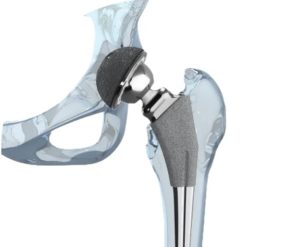I recently posted a blog about a crash that took the lives of a grandmother and a little girl in Jamestown, North Carolina, when their car was hit by a patrol car trying to catch a speeder. Such tragedies bring sorrow to all they touch. This one may trigger an additional reaction – to look for ways to prevent collisions like this in the future.
The crash happened on May 23 as Sandra Allmond was driving home from church with three children: her grandson, Elijah, and Taylor and Steven Strange. Highway Patrol Trooper J.D. Goodnight had clocked another car going 80 mph in a 55 zone. He was in pursuit heading south on I-85 Business when Allmond’s car turned left in front of him from the northbound lane.
The impact was incredibly violent. A preliminary investigation has found that the Dodge Charger patrol car was going 95 mph when it struck Sandra’s Honda. The Honda was cut in two, and the front end was thrown from the southbound lanes of the road back across the grass median into northbound 85.
Sandra was dead at the scene. Eleven-year-old Taylor died at the hospital. The boys were treated in intensive care and survived.
According to the initial accident report, the passenger compartment of the Honda was thrown 137 feet after impact, just over 45 yards. The patrol car traveled 225 feet, three-fourths the length of a football field.
After a crash reconstruction, another report said the trooper’s car was traveling up to 120 mph before the crash. The cruiser had left 88 feet of skid marks before the impact. A witness said the trooper had swerved to the right trying to avoid the collision.
So, what conclusions can we draw from these facts and figures? What questions arise from the terrible costs in human life? And what answers will to keep more tragedies like this one from occurring?
Are the rules of engagement for high-speed pursuit clear enough? Restrictive enough? Should a limit be set on just how fast an officer can go in a chase?
A Highway Patrol spokesman said there is no clear definition of what speed is too fast for troopers as they try to enforce a traffic stop. And the Highway Patrol may rightly be reluctant to establish such a limit or give out any specific blueprint on how chases should be conducted. If a fugitive knows he only has to go a certain speed to outrun the law, it might be an incentive for more suspects to try to speed to escape capture.
The spokesman said the Highway Patrol is reviewing its policies on pursuits and was reviewing them even before this incident occurred. This is heartening news. As this review of protocols is conducted, a number of factors and issues present themselves for consideration.
First, are there better ways of apprehending speeders? For instance, could the state use airplanes or helicopters to watch major highways? Could sensors set up at mile markers clock vehicles as they pass? Hidden observers could operate radar units, and radio ahead to officers to set up roadblocks. And stiffer penalties would likely cause motorists to think twice before driving at extremely high speeds.
As officers make a decision whether to pursue a vehicle, they must consider the risk of a chase versus the reward of a capture. Does it make better sense to have just one car on the highway doing 80 mph as opposed to one car going 80 and another doing 120?
Apart from the issue of high-speed pursuit, some consideration should be given to speed limits themselves. At times speeding seems to be a matter of degree. Traffic on the interstates consistently runs at 10 mph over the posted speed limits. It is almost unwritten law that officers will “give you” 10 miles over the limit. Motorists are rarely stopped on busy interstates for any reason – probably because it is more dangerous to pull a car over on the interstate than it is for that vehicle to speed.
Making speed limits more consistent might help. Limits often are not uniform; some roads having a limit of 55 mph while other comparable roads have a limit of 70 mph. And who sets the limits? Does it vary according to jurisdictions? Or should that responsibility be consolidated statewide? What is the procedure for getting limits changed?
Don’t be surprised if some state legislation is enacted on this subject. In addition to the Highway Patrol’s investigation, the N.C. Attorney General’s Office has asked for another investigation to be conducted by an outside agency. And Gov. Bev Purdue has called for answers as to what caused this particular accident.










Comments for this article are closed.